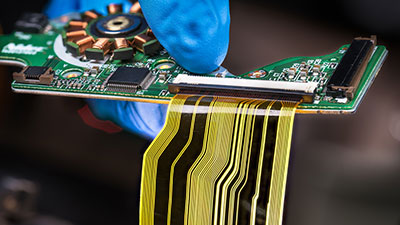The ultrasonic sensor is among the most effective ways of detecting levels with high reliability and sensing proximity.
Arguably, they remain the best choice when it comes to object detection.
Ultrasonic sensors dominate the sensing market because of their built-in capabilities, affordability, and flexibility.
Moreover, the demand for sensing has increased due to automotive applications such as drones and self-driving cars.
This article will discuss the ultrasonic sensor, its strengths, weaknesses, and how to use it.
Also, it will help you learn and figure out the right sensor choices for your needs!
Contents
What is an Ultrasonic Sensor?
An ultrasonic sensor is a device that uses ultrasonic waves to calculate the distance between itself and an object.
Importantly, the sensor sends and receives ultrasonic pulses with an ultrasonic transducer.
As a result, these pulses bring back sensed data on the proximity of an object.

(self-driving cars.)
How Do Ultrasonic Sensors Work?
An ultrasonic sensor works by generating a sound wave that has a frequency higher than the average human hearing range.
The active transducer sends and receives the ultrasonic sound wave.
This sensor counts the time lapse when a transducer sends and receives a signal.
Then, the time-lapse measured determines the distance to an object.
Notably, the electronic device sends a pulse in the air at 40kHz.
When the pulse comes in contact with the target object, it returns to the sensor.
Moreover, the speed of sound and travel time of the vibration helps to get the distance measurement.
Note;
Ultrasonic sensors detect objects despite the material's type, color, or surface.
However, you will get an inaccurate measurement and experience difficulty measuring some characters.
This occurs mainly in soft materials and applications that use infrared sensors.

(ultrasonic parking sensors)
Special Offer: Get $200 off your order!
Email [email protected] to get started!
Types of Ultrasonic Sensors
Notably, there are two kinds of sensor types.
- Proximity detection
A capacitive transducer will detect an object within the set ultrasonic range and produce an output sound signal.
Also, the point of detection is not dependent on the target size or the type of object material.
- Ranging measurement.
To measure the actual distance of a target traveling to and from the ultrasonic detector is through the time intervals between the ultrasonic sound.

(an ultrasonic device.)
How are Ultrasonic Sensors used?
Proximity-style ultrasonic sensors often require the help of a microcontroller.
Examples of used microcontrollers include a Raspberry Pi,
Arduino, and a Beagle board.
Ultrasonic sensors have ultrasonic technology that measures the target distance by giving out ultrasonic sound waves.
Once the sound waves reach the target object, they get reflected and converted into an electrical signal.
Notably, this action will only occur if the presence detection is within the sensing range.
Often, short-range ultrasonic sensors have the ability for a closer and more stable detection range.
Also, these proximity sensors have low power requirements and are very efficient in noisy environments.

(image showing an ultrasonic sensor to measure pipe thickness.)
Strengths and Weaknesses of Ultrasonic Sensors
Strengths
- It is not affected by the object's color, whether translucent or transparent.
- Has flexible minimum or maximum set ranges
- They are durable because of the improved ultrasonic technology, are easily understood, and are reliable.
- Provides precise measurements within a very short time.
- Very affordable since it uses little to no rare materials.
- Easily blocks all the electrical noise and acoustic waves from a harsh environment.
Weaknesses
- The sound speed depends on environmental conditions such as humidity and temperature.
- Additionally, these effects of weather might change the measurement accuracy.
- The ultrasonic sensor only determines the gap between the transducer and the object.
- It does not determine the object's color or shape.
- Notably, the device is small and can fit into large objects such as cars.
- However, the sensor is not guaranteed to fit in smaller projects.
- Exposing the sensor to dirt, ice, or water may dysfunctional the sensors.
- Lastly, the sensors can not operate in a vacuum due to their over-dependence on sound.

(a modern device with an ultrasonic sensor)
Ultrasonic Sensing Applications
- Obstacle detection
- People detection
- Distance measuring
- Parking spaces

(parking sensors.)
Summary
Ultrasonic sensors offer great distance sensing and presence detection solutions with excellent characteristics that make them reliable and easy to use.
If you want to learn more about your sensor-related projects, contact us!
Our team is always happy to answer any questions from you.
Special Offer: Get $200 off your order!
Email [email protected] to get started!






